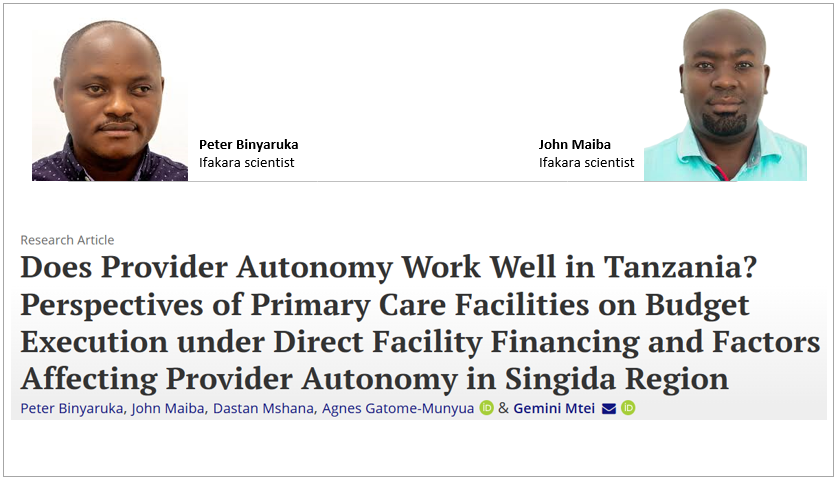
HEALTHCARE: Study highlights challenges in sending money directly to health facilities

Tanzania’s Direct Facility Financing (DFF) model has brought transformative changes to primary health care by empowering facilities to manage funds and address community needs. However, a recent study published on the Health Systems & Reforms journal, shows that, despite the model’s promising outcomes, some barriers remain, preventing the full realization of financial autonomy for health facilities in Singida Region.
Addressing these challenges is essential in order to optimize healthcare delivery and advance national health outcomes, underscores the study authors, who include researchers from Tanzania and Kenya.
“DFF is a promising modality for health financing… However, various challenges continue to hinder the autonomy of frontline service providers to fully execute DFF funds. To improve DFF budget execution, policymakers in Tanzania and elsewhere should consider reforms to better align public financial management and health financing,” the scientists emphasized.
Challenges in DFF implementation
The study identified several barriers that hinder the effective execution of DFF funds, including delays in funds disbursement, long and complicated procurement and spending approval processes, and low spending caps, restrictions on reallocations of funds within and between budgets. Additionally, many healthcare providers lack adequate training in budgeting, financial management, and resource execution, limiting the effective use of DFF funds.
According to the scientists, these challenges reflect issues reported in other countries, such as Kenya and Ghana, underscoring the need for systemic reforms to ensure financial autonomy translates into improved healthcare outcomes.
DFF’s progress toward financial autonomy
The DFF model introduced in Tanzania in 2017/18, aims to reduce bureaucratic hurdles by directly transferring funds to the bank accounts of primary care facilities, enabling them to plan and budget according to local needs. This approach provided facility managers with greater decision-making authority, allowing them to address community-specific health priorities.
In Singida, DFF has improved processes such as drug procurement, a key success celebrated by healthcare providers. Similar successes have been observed in other African countries, including Kenya, Burkina Faso, and Nigeria, where similar financing reforms have improved transparency, accountability, and service delivery.
Policy and research recommendations
To maximize the potential of DFF, the scientists recommend streamlining funds flow processes and further expanding autonomy in budget execution. Their suggestions include streamlining financial procedures, increasing flexibility in budget reallocation, strengthening financial management through ongoing training for healthcare providers and aligning financial management rules with health financing needs.
“The study’s findings underscore the need for various and multifaceted interventions to enhance adaptive financial management practices and streamline processes to address delays and bureaucratic obstacles to budget execution. Addressing these DFF implementation challenges is crucial for advancing health care delivery and achieving optimal health outcomes in Tanzania,” the authors concluded.
Streamlining DFF to its full potential
Tanzania’s DFF model represents a significant step forward in healthcare financing. Despite its success in reducing bureaucratic hurdles and empowering primary care facilities, scientists highlight the need to tackle ongoing challenges within the DFF system to realize its full potential.
“This study provides valuable insights into the complexities of DFF design and implementation in Tanzanian healthcare settings. It affirms that DFF goals remain relevant in Tanzania and offer potential benefits to other LICs and LMICs. However, it also indicates a need to streamline the effectiveness of DFF funds flow and further expand autonomy in budget execution,” the scientists noted.
Contributors to the study
This study was a collaborative effort by scientists from Tanzania and Kenya. Contributors included Peter Binyaruka and John Maiba from Ifakara Health Institute, Dastan Mshana from the President’s Office - Regional Administration and Local Government, Agnes Gatome-Munyua from Results for Development (R4D) in Kenya, and Gemini Mtei from USAID Public Sector Systems Strengthening Plus (PS3+) in Tanzania.
Read the publication here.
